How to Maintain Positive Relationships With Your Email Subscribers
For the previous several months, you’ve most certainly been bombarded with news, updates, and notifications as the globe follows the events and developments of 2020.
However, as a marketer, you’re probably not interested in hearing more of the same from sites like ours. Rather, you want to know how to handle your interactions, particularly when you transition with subscribers during difficult times. And, when it comes to subscribers and consumers, you’re probably wanting to keep the good vibes going.
With that in mind, we’ve compiled a list of sensible methods for you to continue interacting with your audience.
It is more crucial than ever to maintain excellent connections with subscribers. So, during COVID-19, think of innovative strategies to attract subscribers
While your readers are certainly yearning for some routine, that doesn’t imply they want mundane emails. If not done appropriately, tone-deaf messages and sales presentations may be off-putting.
Think about the emotional effect of your message
Marketers are well aware of the emotional effect that communications can have, yet emotions are at an all-time high right now. Marketers must consider the present environment when producing product or service communications, particularly messages that promote going out or spending money in the current context. The improper message might elicit a significant negative reaction.
Try meeting your subscribers where they are by providing them with useful, relevant material. For example, Bobby Berk’s email delivers material that readers may consume while socially distancing themselves:

This item demonstrates sensitivity to individuals and their feelings. Rather of presenting recipes that are difficult and impractical for the time, the newsletter offers meals that individuals can simply create without having to go to the grocery store.
Allow individuals to engage with one another
Companies and organizations have learned that their digital resources are increasingly more beneficial to subscribers when in-person encounters decline. As most in-person activities have been postponed or canceled, clubs, courses, and applications have been freely accessible to interested people.
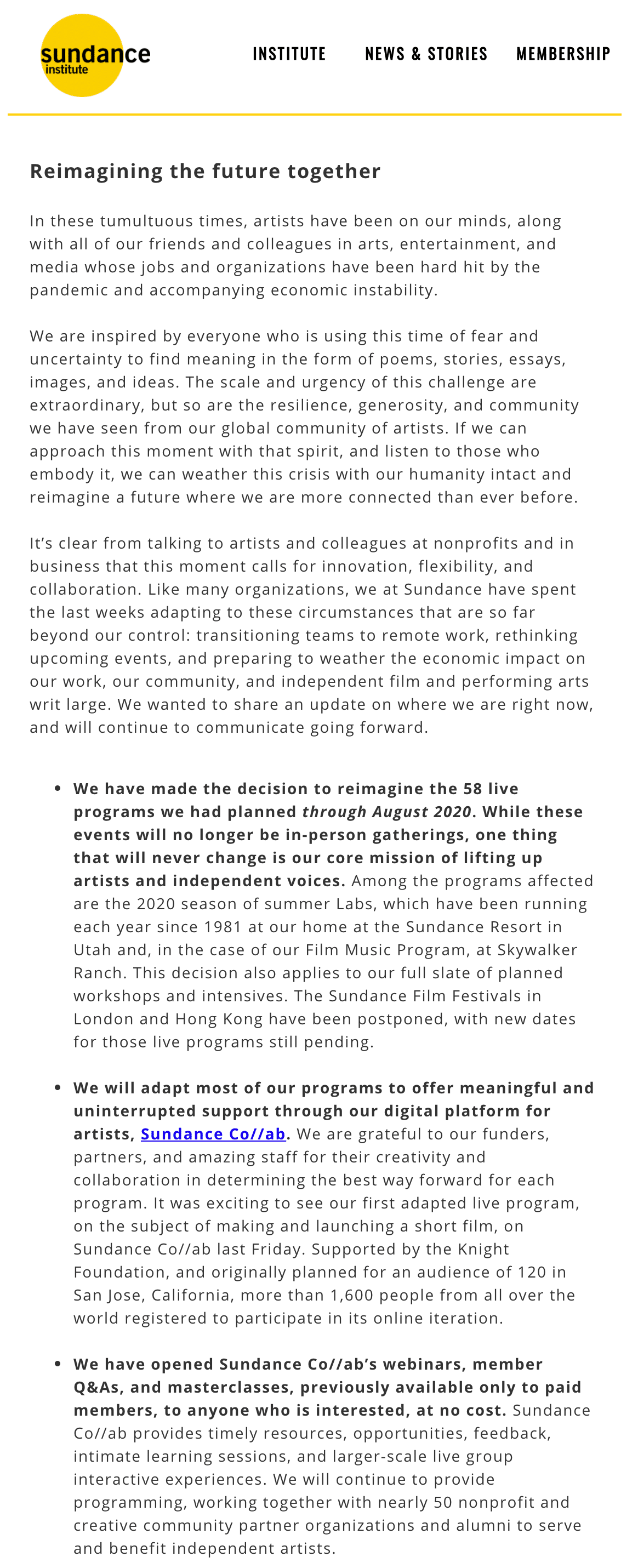
In the spirit of interactivity, investigate how you may allow subscribers to connect with your brand (and potentially other subscribers).
By doing so, you create a chance to engage your subscribers with some of the social connection they want while also encouraging long-term brand awareness.
Help someone out
Not only should you reward the subscribers who make your brand feasible, but if you’re able (and not everyone is), it’s also a good idea to show your subscribers that you’re taking the initiative and doing something good for the community.
Many customers, particularly Generation Z, are more inclined to examine a brand’s principles and gravitate toward socially aware firms.
Twitch’s example shows how firms may utilize their platforms to give back. Twitch has teamed up with influencers and celebrities to hold a 12-hour charity broadcast.
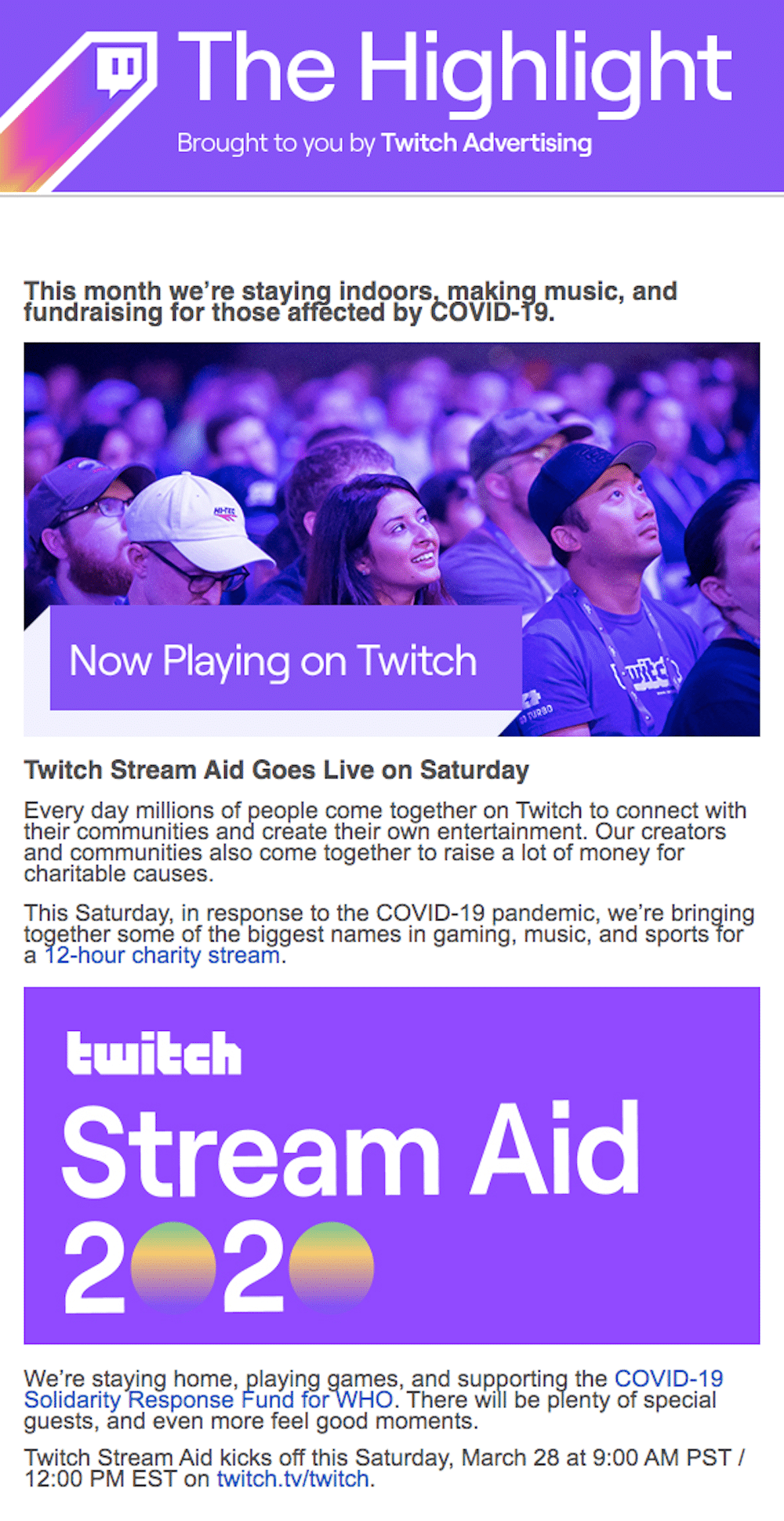
Of course, talking to your subscribers isn’t enough: you should also be listening to their comments, which is always useful.
Inquire how subscribers are faring at times of uncertainty and crises
Many subscribers may prefer to offer input now, rather than passively receiving information. While not all of it may be favorable, your company might profit from demonstrating that you are paying attention.
How? You may direct subscribers to your preference center, a poll, or give them the choice to halt their membership for 30 days.
Let us go through a couple of them.
Allow overburdened subscribers to suspend your emails.
Other brands are following suit. HardGraft, an online lifestyle business, allows their audience to halt emails with this message:
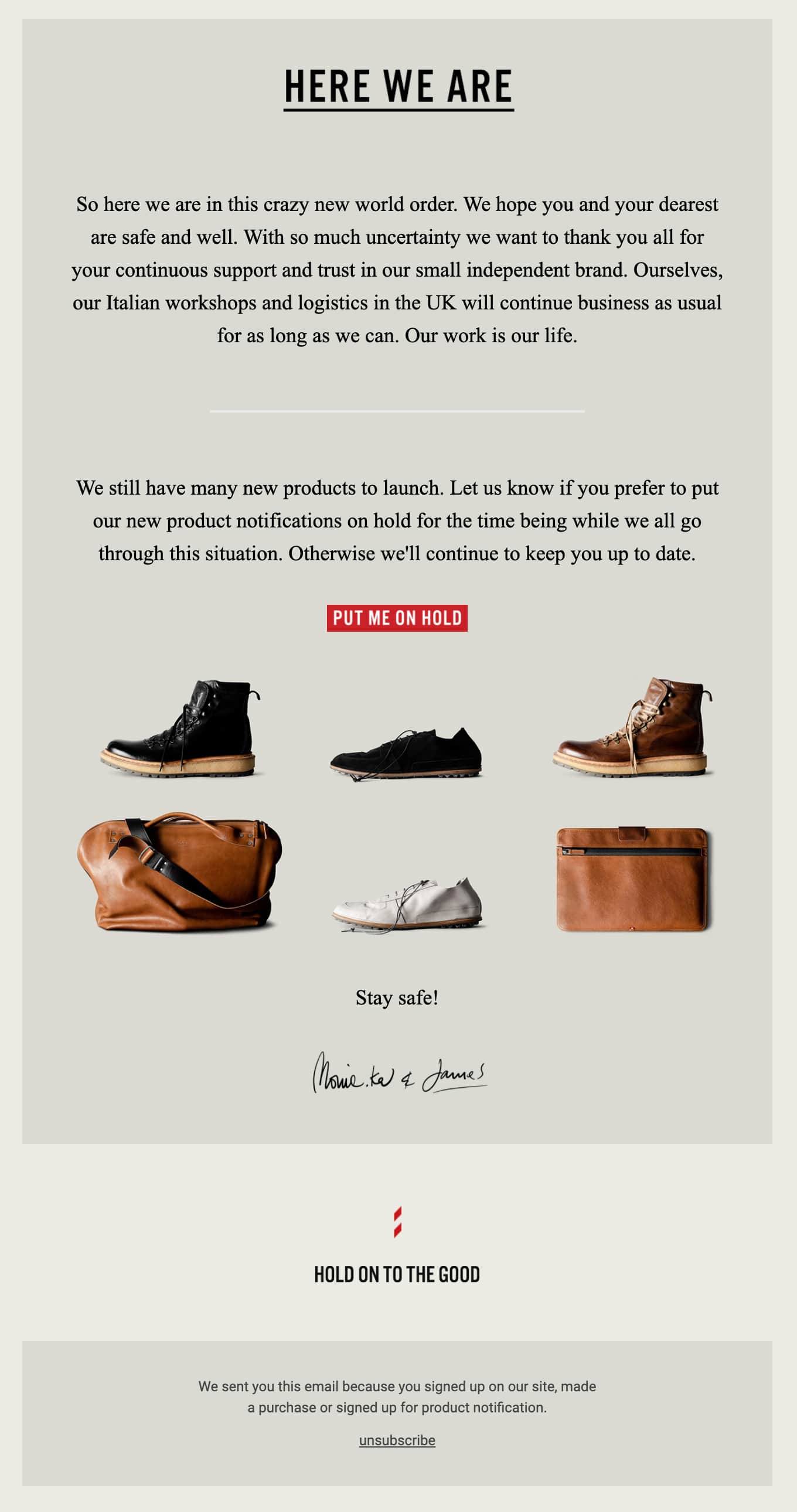
It is always preferable to be sympathetic to your audience. Consider what they need right now and meet them where they are.
And if you’re not sure how, just ask.
Using a survey, you may get a sense of your target audience
Surveys are a great method to start a conversation between your business and your target audience. And, just as your messaging must be well-crafted, your survey must be meticulously designed.
Consider the following questions:
- What are we hoping to gain from this survey?
- How much time should it take?
- Who will be the lucky recipient?
After you’ve finished your survey, determine who will get it. Do you have some segments that are more willing to submit input than others? Do you, on the other hand, have a list of your most engaged subscribers? Whatever lists you choose to survey, remember to test and determine which strategies perform best.
Your survey’s message should also be clear. Explain why subscribers are offering useful input and what you intend to do with it.
Here’s an example from Nashville’s Stay Golden restaurant. Restaurants had to pivot during COVID-19 and shelter-in-place requirements. Stay Golden understands that they may not have all of the answers, so they’ve asked their audience to contribute vital input through a survey.
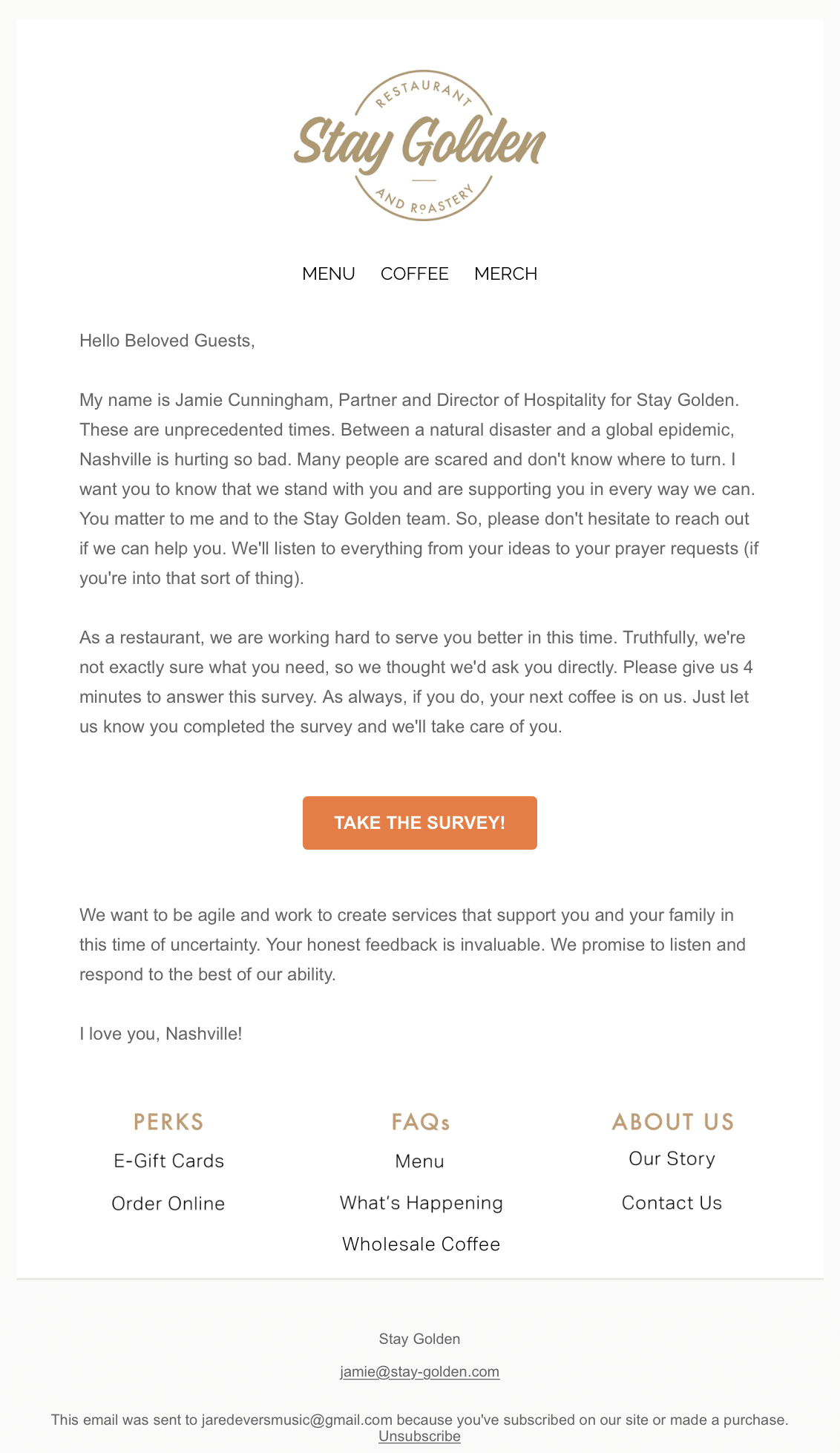
As you send out your survey, be sure to prepare your staff for the findings. Passionate subscribers generally have a lot of input, so think about how you can leverage their ideas to better your marketing efforts.
You may even reveal the findings to the participants. Take note of how Hers takes a step further and displays specific data from their poll results:

Whatever the outcome, you should be asking yourself the following questions: Can goods be simplified to respond to customer feedback? Is it possible to improve the client experience? Whatever action you take, you should intend to immediately communicate outcomes and anticipated adjustments with subscribers.
Take note of how the nonprofit-focused IT firm Kindful went above and above. First, they sent a survey to better identify the issues that their target audience (nonprofit workers) faced during the coronavirus outbreak:
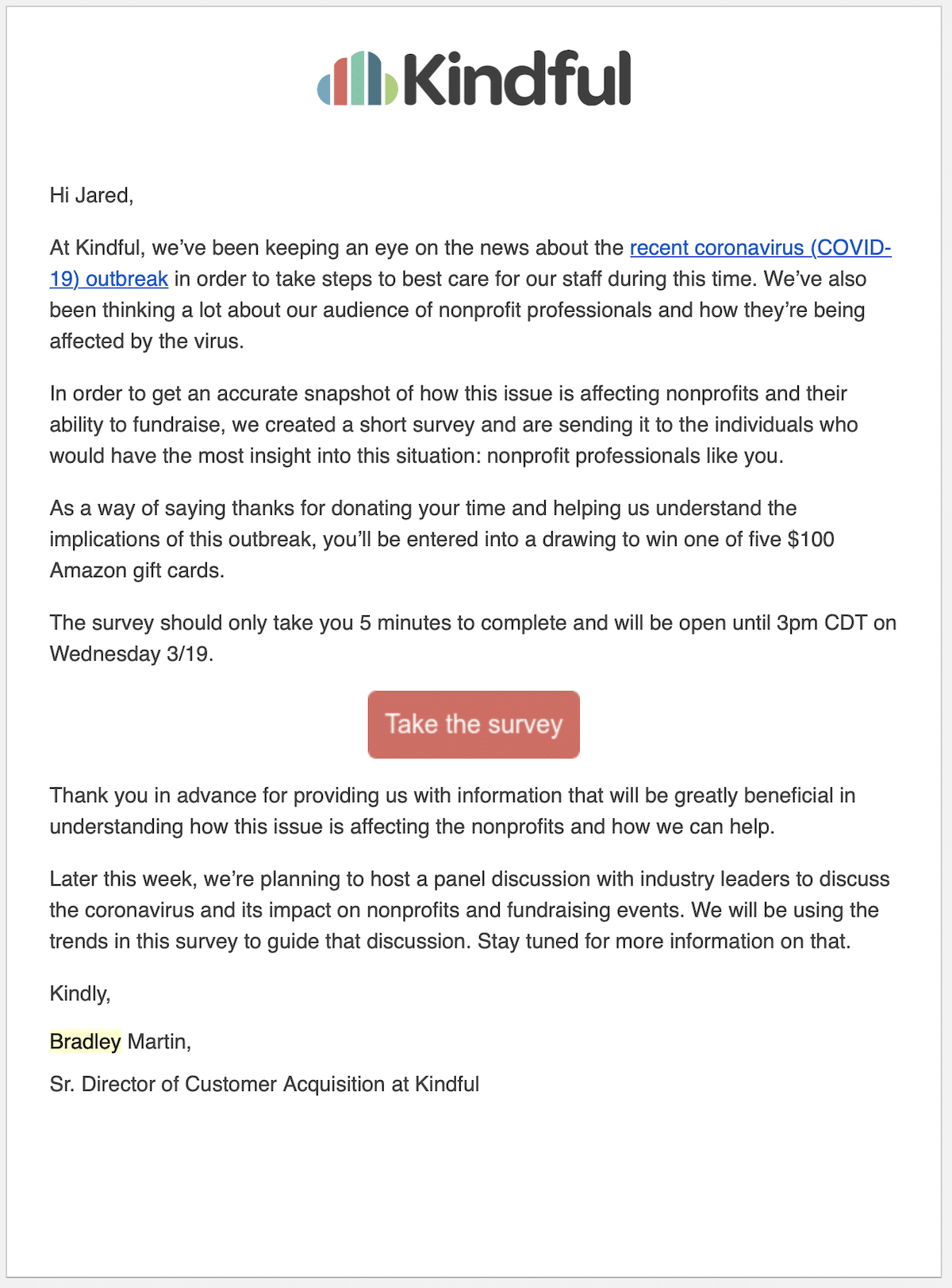
They then followed up with comments from thought leaders in the sector, as well as organizing a webinar to explore the results and how organizations might confront particular difficulties.
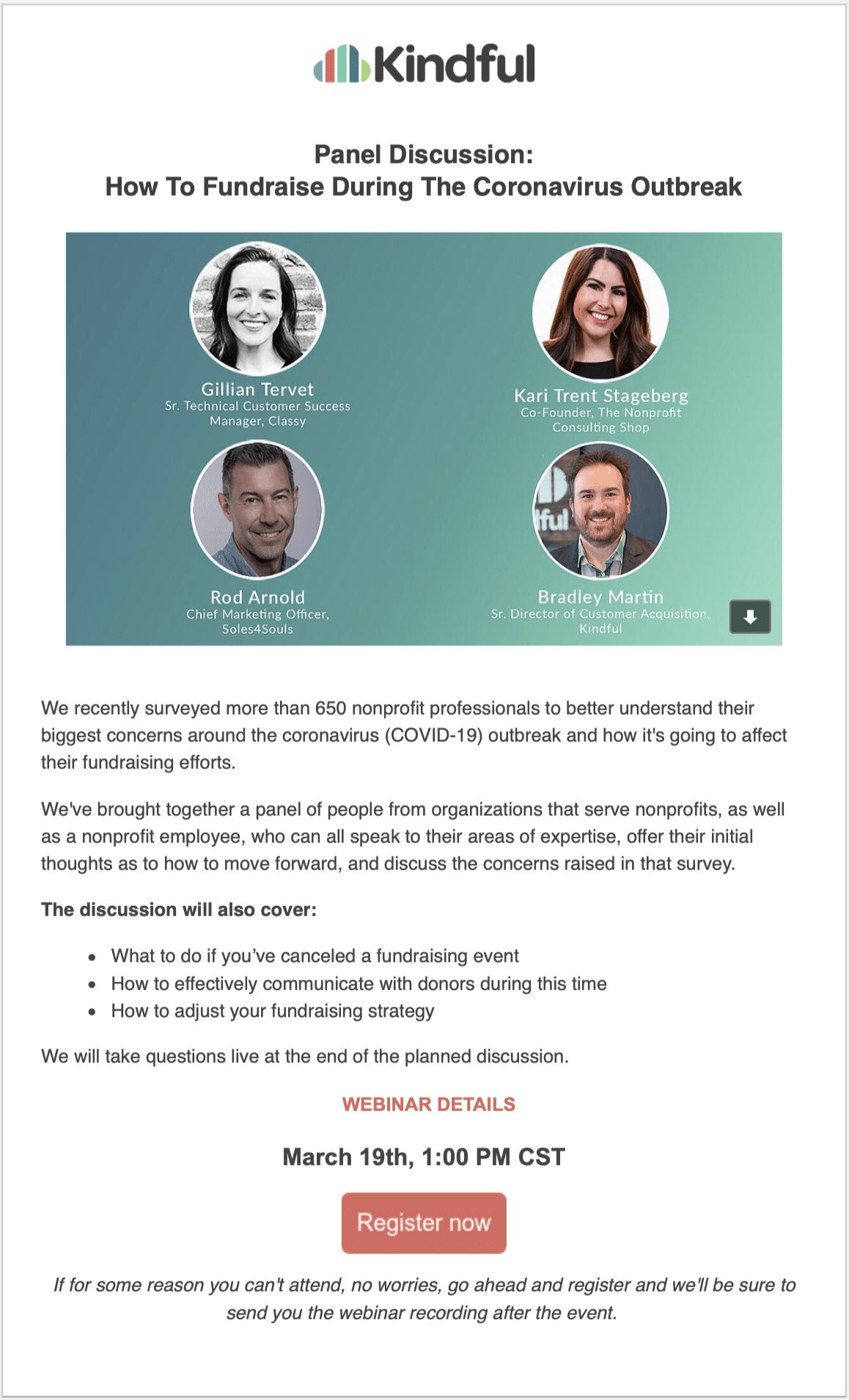
Conclusion
As our way of life evolves, consider how you can provide your subscribers with continuous, relevant material they can rely on.
Consider your audience’s emotions and how your communications might effect them while also meeting them where they are. Provide personalised services that your subscribers may need (maybe now more than ever), while also allowing them to engage with your brand.
Finally, demonstrate subscribers how you’re assisting others. This might take the shape of anything from a benefit or charity giving to assisting subscribers by recognizing and acting on their input.
You may continue to create trust and good connections with your email subscribers by demonstrating that your firm is there and ready to respond when needed. Along the process, you could even enhance your marketing.






Recent Comments